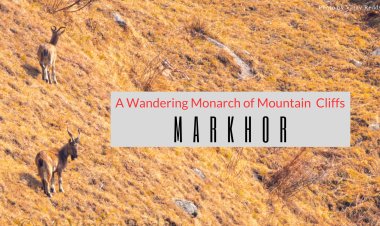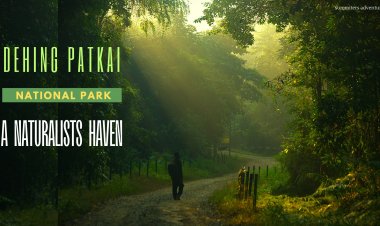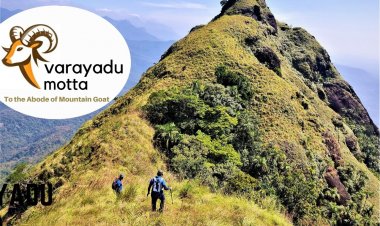Kaziranga - Where Rhinos Rule !

The thick veil of fog almost cleared and the dense evergreen grassland unravalled as soon as the sun blazed overhead, a veritable ball of fire. We were precariously balancing atop the 55yr old Bonamala at the Bagori Forest Range in the Western part of Kaziranga National Park. Our mahout whispered and pointed at a herd of unicorns grazing in the slushy wetland.

The legendary Rhino land needs no introduction. However one interesting story in the history of Kaziranga as a protected area can be traced back to 1904, when Mary Victoria wife of the Viceroy of India Lord Curzon visited the area. After failing to see a single Rhinoceros, for which the area was renowned, Disspointed!, She persuaded her husband to take urgent steps to protect the dwindling species. In 1905 Kaziranga was declared a Reserved Forest . In 1985 Kaziranga was declared a world Heritage site by UNESCO for its unique Natural environment. Today it boasts of the highest desity of Tigers among the protected areas in the world and was declared a Tiger Reserve in 2007.
I have always been fascinated by Kaziranga eversince childhood. We all know that it is our greatest wetland parks in the country. Major part of the 430 sq km is only at an altitude of 75 metres above sea level. Situated between the Mikir Hills and the great River of sorrow Bramaputra ,The entire plateau is often flooded during monsoon. With most part covered with reeds , tall elephant grass and hence sprouting out of the marshy terrain, it is ideal for swamp loving creatures, Like Unicornis aka rhinoceroses !
Though jeep safari inside the park was available. I loved to exlore the inner regions upon a Elephant in the wee hours and for chances of better photography!.Luckily.We spotted our first herd of Rhinos as soon as we entered the park. The grunting sound drew our attention and we were fortunate to sight a few very closely. Our guide sitting next to us told that a Fully grown Adult can weigh upto a mammoth 2000kgs and horns normally measure between 15 to 50 cms in length. Though they have a poor eyesight, they can charge with a speed of 25 - 30 Kms per hour and turn back very fast in no time.

The Swamp deer or Barashingha as it is called , Asiatic Wild Buffalo’s,Asian Elephants are a major attraction in the park. The other species of animal life that include are large cats such as Royal Bengal Tiger and Leopord . Small mammals such as Jungle cat, Fishing cat, Hispid Hare, Indian grey Mangoose. Small herbivores such as Hog deer, Indian Munjtac, Wild Boar,Large Indian Civet Cat, Golden Jackal, Sloth bear, Chinease pangolin, Indian Pangolin, Bengal fox, Particolored Flying squirrels, Assamese macaque ,Capped, golden Langur, Hoolock gibbon can be found. Kaziranga rivers are also home to the endangered Ganges dolphin.
The Zooligical survey of India under the leadership of famous Ornithologist Salim Ali have spotted and recordedmore than 480 species of bird life resident and migratory birds in the region.
The common birds we noticed in the region were Peacock ,Jungle fowl, Emerald Dove, Hornbills, Partridge, Parakeet, Cormorants, Drongo and Woodpeckers. Birds such as lesser white fronted Goose, Lesser adjutant, Greater Adjutant, Black necked Stork, Asian open bill stork, Blyth’s Kingfisher ,White bellied Heron ,Dalmatian Pelican, Spoon billed pelican ,spotted green shank and Grey headed Fishing Eagle migrate from Central Asia every year. Birds of prey such as Eastern Imperial, Greater spotted, White tailed, Pallas fishing Eagle, Grey headed Fishing Eagle have been recorded.
Kaziranga was once home to seven species of Vultures. At present only 3 have survived namely Indian Vulture, Slender billed vulture and Indian White Rumped Vulture.
With the other species of Snakes, Kaziranga is home to two of the largest snakes in the world. The Reticulated Python , Rock Python and as well as the venomous snake in the world, King Cobra.
We encountered a herd of Swamp deer in the bushes.We were told that it is the right place to see and photograph large herd of deer in the back drop of Himalayas

.We were happy when we were photograph these fast moving creatures .We had seen a group of Wild Buffolos in Namdapha National Park in Arunachal Pradesh last Year. They were said to be separate sub species and darker in complexion. But to my dismay I did not spot a single Indian wild Buffalo in Kaziranga.
In a short distance a hefty Rhino moved into the bush with a calf. His head was down when we first saw him , but then again turned back looked up doubtfully and gave us a irritable look. Our guide added ‘ It is a very humble creature and particularly when a mother is with her calf it becomes formidable’ !. From his memories down the line he explained few Rhino attacks in past years. Our mahout must have sensed the beast in anger .He diverted the route slowly .Our cameras buzzed instantly and then our guide told that we are finally out off the danger zone!.
It was almost by noon we left the park with one regret .We were not lucky to spot the striped cat or sherkhan in wilderness. The park offered me endless excitement and adventure altogether. I noticed few staff stationed at strategic points for effective patrolling and keep a check on forest fires..All these efforts have culminated in a proper environment with an even distribution of wild animals and to sight wildlife easily in its natural habitat….!












